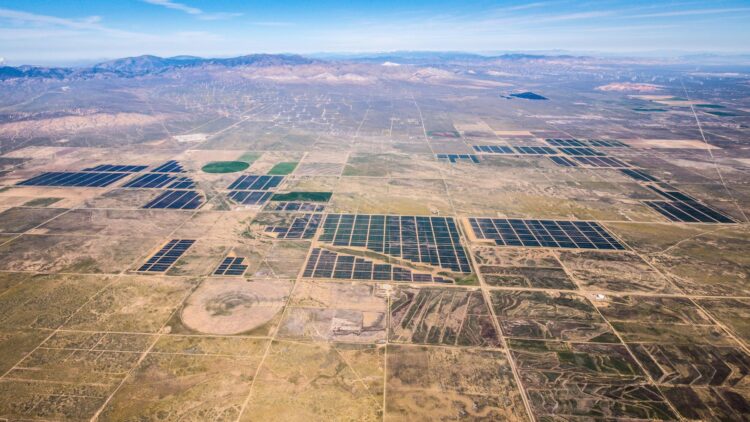To promote the use of renewable energy, America has formed 1.7 million solar panels in the desert to make a stunning view and surprise. This is a massive project within the Solar Star program in California. In addition to the goal of producing significant amounts of clean energy, it has positive and negative effects.
The Solar Star project: An engineering marvel in the desert
The Solar Star was initiated in 2015 and has become the largest solar farm in the US and globally. With a coverage of over 13 square kilometers, it is approximately four times larger than New York City’s Central Park.
This unbelievable solar farm produces 579MW of energy and can provide electricity for more than 250,000 homes. The project’s success is due to the solar panels being equipped with innovative tracking systems, which ensures a high level of the panels’ productivity.
The concept of the Solar Star is a work of engineering genius and the foresight of humanity. This proves that in a creative capacity, a large and complex project can be brought to life with technological ingenuity. Solar farms have produced such a large quantity of energy, and efficiency is a record set that many renewable energy projects across the globe should emulate.
In addition, Solar Star is now an emblem of leadership and pride in the United States’ renewable energy industry. This reveals the viability of large-scale solar systems to supply a substantial portion of the nation’s energy requirement while being environmentally friendly. The project’s success has spurred more such initiatives. Thus, the issue of innovation in the shift towards renewable power is underlined.
However, the Solar Star project has the following advantages apart from the intended objective of generating renewable power. An obvious benefit is the environmental benefit of carbon emissions, equivalent to taking 108,000 cars off the road each year. This has, in a very big way, supported the fight against climate change and the general well-being of the environment, hence the importance of the project.
Also, this project has provided a lot of employment opportunities. Solar Star created 650 jobs in the construction phase, and currently, it is offering only 40 maintenance jobs. These employment opportunities indicate likely economic benefits that come with renewable energy sources, showing that renewable energy sources can trigger economic development and have environmental benefits.
The Solar Star project also aims to educate people and act as an indicator of environmental protection. Schools and environmental organizations often use this to show the achievement of the use of renewable energy. The project has addressed the public by making people change their mindsets and believe big solar power plants are possible and practical.
All the same, the Solar Star project encountered some difficulties during its implementation. The construction and development of such a project presented some challenges in logistics, environmental impacts, and legal restraints. Environmental impact assessments were required of the developers, and creative approaches had to be taken to prevent the solar farm from harming the fauna and flora of the region.
The project’s success also established the synergy between the public and private sectors of the research hypothesis. The challenges were eliminated when private investors provided financial backing while government agencies provided technical support to fulfill the targeted goals of the project. This partnership is one for future renewable energy projects as it shows how things must be done to progress.
Nevertheless, the project met many legal bubbles from local communities like Esmeralda County, Nevada. People were also concerned that the natural beauty area would be affected and worried about the number of workers flooding the area. These challenges highlight the need to assess a region’s social and environmental context before engaging in the large-scale implementation of renewable energy projects.
Installing 1.7 million solar electricity panels through the Solar Star project in the desert is a milestone in renewable energy in America. However, in addition to achieving a record of energy production, the project has many other positive impacts on the environment and economy, as well as revealing the problems of renewable energy at a large scale.
As the world looks for better ways to produce clean energy, the experience from the Solar Star project will be key in shaping future projects aimed at delivering clean energy.

